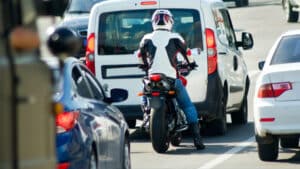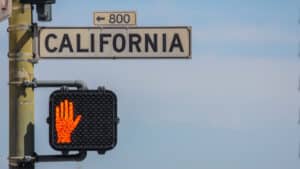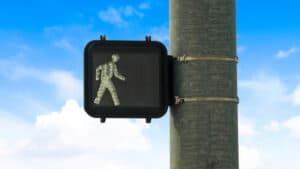This article was written by Chris Dolan and published by The San Francisco Examiner. Click here to read more of Chris Dolan’s weekly articles at SFExaminer.com.
Usually I respond to questions which are asked by Examiner Readers.
This week I am going to provide readers a warning about what I believe is a dangerous intersection: Fell and Van Ness. Crossing east or west on Fell over Van Ness presents a serious risk of harm or death to pedestrians because of the fact that there is no pedestrian signal which provides pedestrians information as to when it is safe to cross (white pedestrian) unsafe to cross (red pedestrian) or countdown information like that which exists at most major intersections including that just a block down the street at Market and Van Ness. I will be sending a copy of this article to Dennis Herrera, our City Attorney, Mayor Ed Lee, Supervisor Jane Kim, (Supervisor for District 6), and David Chiu, State Assembly Member for San Francisco. As Van Ness is State Highway 101, I will also send a letter to Bijan Sartipi, CalTrans District 4 Director.
The reason why this intersection is dangerous is that, in the absence of either a walk/don’t walk sign, or a countdown pedestrian sign, pedestrians can enter the roadway, which spans 6 lanes of traffic, a median strip and two parking lanes (over 84′ wide) and get trapped in the middle of Van Ness when the light turns red for them and green for north south traffic on Van Ness. On Tuesday, as I was walking from my office to get lunch on Hayes and Gough, I crossed Van Ness at Fell. I entered Van Ness, heading west on fell, on a solid green light. After I crossed the parking lane and two of the lanes of northbound Van Ness the light turned yellow and, within seconds, red. I barely had time to get to the narrow median as the cars sped by on either side of me.
Had I been an elderly or handicapped pedestrian I would not have made it to safety. The situation reminded me of 19th street where a number of senseless deaths occurred under similar circumstances. The law in this area generally does not act to motivate governmental entities to take affirmative action to prevent tragedy at intersections such as this. The legislature has granted public entities broad immunities meaning that public entities can’t be sued for being negligent. For example, Government Code Section 830.6 states that “a public entity is not liable for an injury caused by the plan or design of a construction of, or an improvement to, public property where such plan or design has been approved in advance by the legislative body of the public entity or by some other body or employee exercising discretionary authority to give such approval.”
Likewise, California Government Code Sections 830.4 and 830.8 provide immunities to governmental entities for dangerous conditions created by a failure to provide signs, signals, striping or traffic control devices (including pedestrian warning signs).
Section 830.8, “Failure to provide traffic or warning signals” states that neither a public entity nor a public employee is liable for an injury caused by the failure to provide traffic or warning signals, signs, markings or devices described in the Vehicle Code. Wow. What then motivates a governmental entity to place appropriate signs and signals on our streets?
First and foremost, these officials have demonstrated an inherent dedication to the people that they represent and making our streets safer. Second, in jurisdictions which do not have that same commitment an exception to the immunity exists where it can be shown that the presence or absence of signs, striping, signals or other traffic control devices leads the unwary pedestrian, motorist, bicyclist, etc., into what could be described as a trap. Section 830.8 states that nothing in the section exonerates a public entity or public employee from liability for injury proximately caused by such failure (to place a sign or signal) if a signal, sign, marking or device was necessary to warn of a dangerous condition which endangered the safe movement of traffic and which would not be reasonably apparent to, and would not have been anticipated by, a person exercising due care. As one court has ruled, “[when a] defendant undertook to control traffic at the intersection and invited reliance on the signals it may be held liable if it created a dangerous or defective condition in doing so.” (Teall v. City of Cudahy (1963) 60 Cal.2d 431.) Perhaps most on point is the case of Callahan v. City and County of San Francisco wherein the court stated “The immunity, however, is inapplicable when a warning sign is necessary to warn of a concealed trap.”
I urge these honorable elected officials to take action to place a countdown style pedestrian crossing sign at this intersection. As a lawyer who represents people who have been injured, and families that have suffered death of a loved one, I hope that this kind of tragedy can, and will be, avoided. Not only could it save the taxpayers millions in a lawsuit, more importantly, it could save a life.










